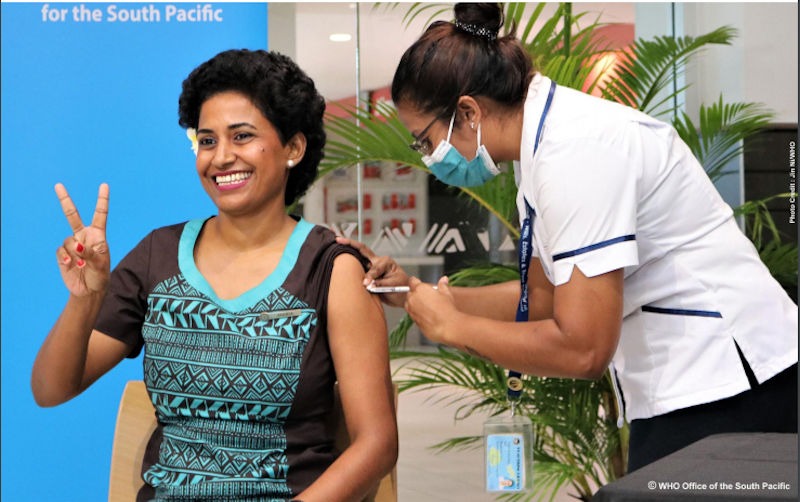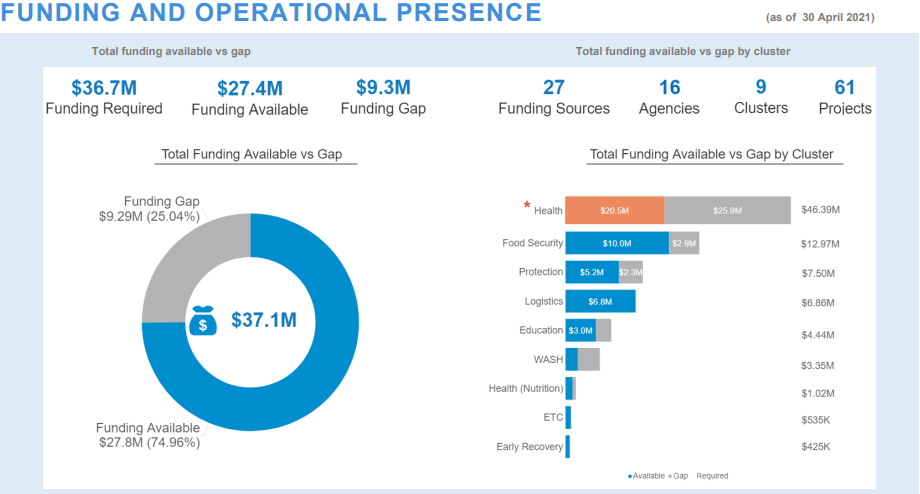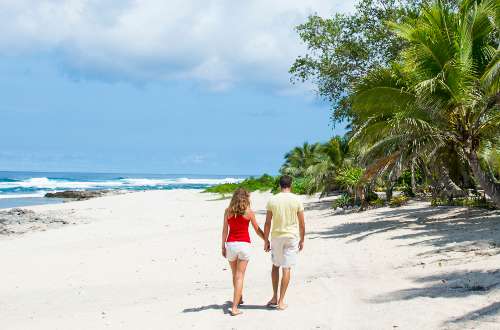
Richard Butler | Exclusive Report By Relief Web International | MAY 18th, 2021
INTRODUCTION
Changing needs over the course of 2020 Launched in May 2020, the Pacific Humanitarian Team COVID-19 Humanitarian Response Plan (hereafter referred to as the “Humanitarian Response Plan”) represents the international relief response to the impact of COVID-19 in the Pacific. The Humanitarian Response Plan covered 14 Pacific Countries and Territories (PICTs) – Cook Islands, Fiji, Federated States of Micronesia (FMS), Kiribati, Nauru, Niue, Palau, Republic of Marshall Islands (RMI), Samoa, Solomon Islands, Tokelau, Tonga, Tuvalu and Vanuatu – and encompassed all humanitarian sectors apart from the immediate health response, which was guided by a separate plan, the COVID-19 PACIFIC HEALTH SECTOR SUPPORT PLAN – Phase 2, coordinated by the Pacific Joint Incident Management Team (JIMT).
By global comparison, the Pacific has been largely spared from the health impacts of the COVID-19 pandemic. Of the countries covered by the Humanitarian Response Plan, as of 30 April 2021 the following five have registered COVID-19 cases: Fiji (116 cases, 2 deaths), RMI (4 cases, 0 deaths), Solomon Islands (20 cases, 0 deaths), Vanuatu (3 cases, 0 deaths) and Samoa (1 case, 0 deaths).It is important to note that of these countries, only has Fiji recorded community transmission of the disease. All other cases have been recorded at the border or in quarantine facilities.
The broader humanitarian impact of COVID-19 in the Pacific
Whilst many Pacific countries have avoided importation and local transmission of COVID-19 through strict travel restrictions and border control measures, the socio-economic impacts of the pandemic have been severe and wide-ranging. The imposition of lockdowns, states of emergency and restrictions on international travel have caused economic activity to slow significantly. Gross Domestic Product is projected to drop drastically as compared to pre-COVID-19 estimates for 2020 and beyond across all 14 countries. International tourism has come to a near stand-still.

Though most Governments in the region have invested heavily in stimulus packages to revive their economies and cushion the blow of the pandemic to families and businesses, these measures often struggle to reach the most vulnerable groups, among them unemployed or those working in the informal sector. With a decrease in public revenue from taxes and remittances, sustaining economic support to vulnerable groups has become a challenge across the region.
From a humanitarian perspective, COVID-19 continues to exacerbate existing vulnerabilities. Job losses and diminishing livelihoods strain communities’ access to quality food, nutrition, healthcare, and education. With lockdowns and resulting heightened tensions in homes, women, and children in particular are at greater risk of violence and abuse. The wide-ranging impacts of COVID-19 also reduce communities’ resilience to natural disasters and other shocks, an ongoing concern as the 2020/2021 tropical cyclone season continues.
While the pandemic has not to date generated a large-scale health emergency in the 14 Pacific Countries covered under this Humanitarian Response Plan, humanitarian partners continue to work across all sectors to ensure that increasing hardship does not translate into institutionalized poverty and destitution or develop into a situation where large segments of the population will be in need of lifesaving emergency assistance. Furthermore, partners are addressing gaps in national safety nets for the most vulnerable created by the pandemic.





